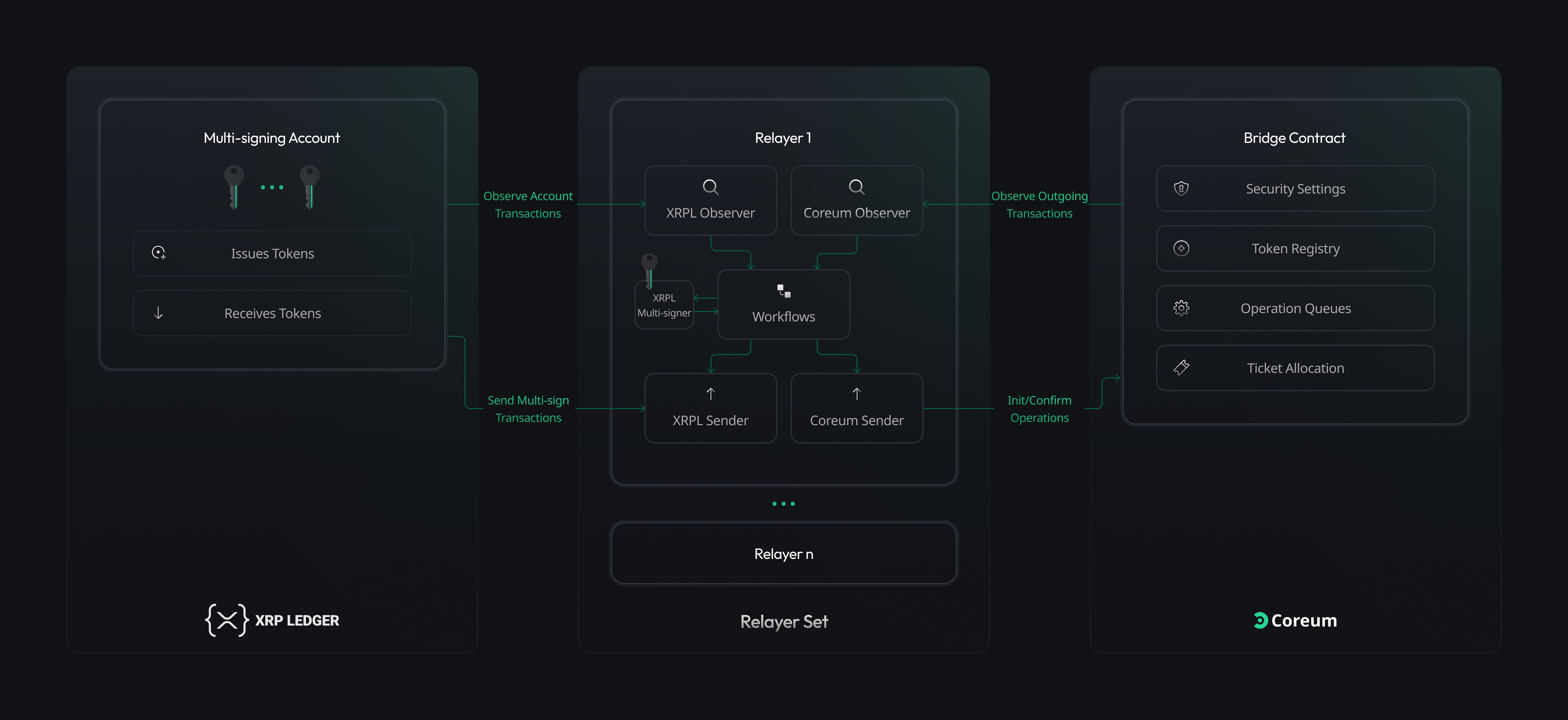XRPL Coreum Bridge
The XRPL-Coreum Bridge marks a significant breakthrough in blockchain interoperability. It establishes a new communication pathway enabling seamless asset transfers between XRPL, a foundational blockchain in the industry, and the expanding universe of IBC-compatible appchains.
The flow of assets for the bridge incurs in a decentralized and non-custodial mechanism.
Each component's source code of the Bridge is open source and available on GitHub.
Get started:
Audit
Audit of the bridge has been performed by Certik. The final report will be published shortly.
Architecture
For additional information, refer to the technical
specifications
This bridge operates based on smart contract logic sitting on the Coreum blockchain interacting with a multi-signing account on the XRPL through a set of 32 relayers.
The flow of assets for the bridge incurs in a decentralized and non-custodial mechanism. This means that there is no individual entity that operates it and holds user assets under custody.
The architecture of the bridge can be divided into 3 key parts:
A multi-signing account
A multisig wallet is like a bank's safe deposit box that requires multiple keys to be used at the same time to open it. This account is owned by the bridge relayers. The account holds the tokens issued on the XRPL and the bridged tokens from Coreum.
The account uses the multi-signing and private keys associated with each relayer for the transaction signing.
The relayers
The relayer is sitting in between the two chains, between the multi-signing account on the XRPL and the bridge smart contract on the Coreum blockchain. They are responsible for listening for events on both chains and trigger actions on the XRPL and Coreum. Relayers are incentivized by receiving fees deducted from transactions.
A bridge smart contract
The bridge contract is the major state transition of the bridge. It holds the operations state and protects the execution using the trusted addresses voting/signing mechanisms. The smart contract is responsible for minting new tokens on Coreum
A Token Registry
Tokens, whether originating from XRPL or Coreum, must be registered for bridging. This registration process ensures tokens are recognized and accurately represented on both networks.
The Token Registry is open source and available on Github.